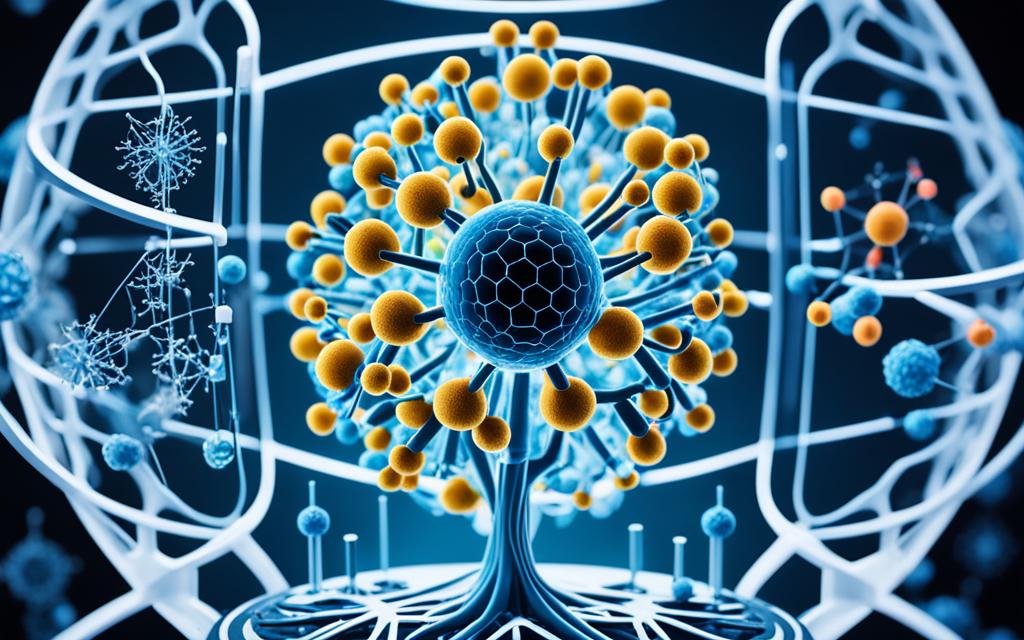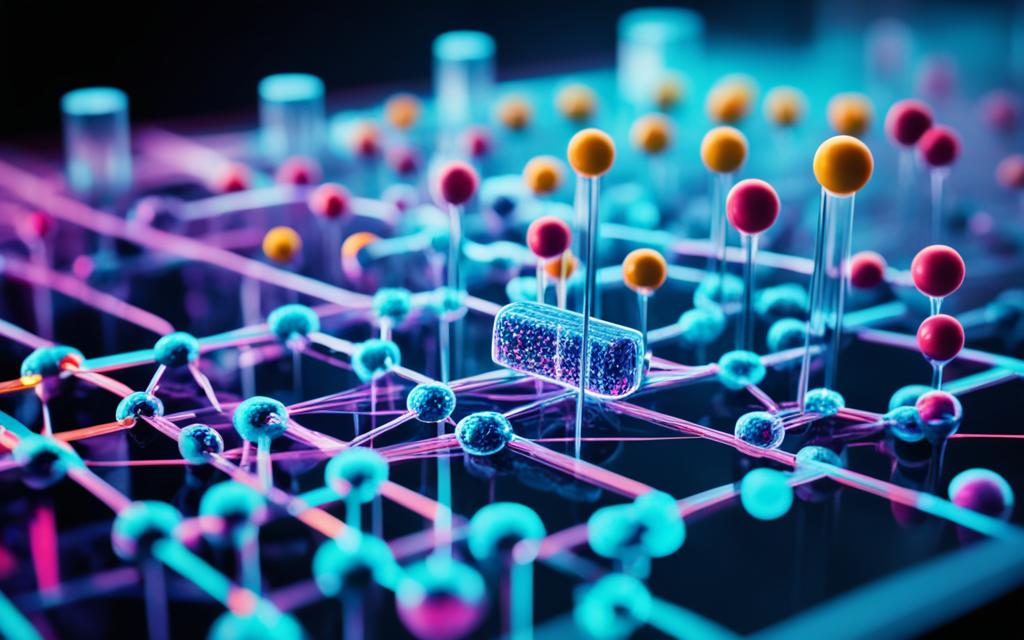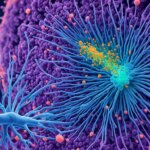Table of Contents
Quantum AI has the potential to revolutionize cancer drug discovery by leveraging the power of nanoparticles. Researchers in Spain have made breakthroughs in the field, developing nanobots that can specifically target and destroy cancerous tumors. These nanobots, propelled by a self-propelling chemical reaction, can penetrate the tumor’s extracellular matrix and accumulate within it, enabling precise targeting and destruction of cancerous cells.
In a study conducted on mice with bladder cancer, the nanobots resulted in an impressive 90% reduction in tumor size. Bladder cancer, being the tenth most common cancer worldwide, has prompted researchers to explore innovative approaches to treatment. The use of nanobots in drug delivery shows promise in enhancing treatment outcomes and addressing the challenges of bladder cancer, such as low permeability of the urothelium and drug washout due to urine content filling.
Bladder cancer treatment often involves tumor resection followed by intravesical injection of chemotherapy or immunotherapy drugs. However, this approach is uncomfortable for patients and carries a significant risk of recurrence within five years. By employing nanobots as drug carriers, the delivery of medications can be improved, recurrence rates reduced, and the cost of treatment significantly decreased by minimizing hospitalizations.
These nanobots, made from mesoporous silica nanoparticles, have proven effective in penetrating tumors due to their unique functional components. Their surfaces are equipped with various components such as radioisotopes for imaging and therapy, as well as the protein urease, which reacts with urea and enables propulsion. The nanobots leverage a self-propelling chemical reaction to increase the pH within the tumor, facilitating greater tumor penetration. Although nanobots lack specific antibodies to recognize tumors, they can break down the extracellular matrix and successfully penetrate bladder tumors, which are relatively less stiff than healthy tissue.
The future of quantum AI in cancer drug discovery is promising. By harnessing the potential of nanobots and their targeted drug delivery capabilities, the treatment of bladder cancer can be greatly improved. However, further research and development are necessary to scale up nanobot production and navigate regulatory pathways for clinical trials. With the right incentives and funding, quantum AI has the potential to accelerate the development and deployment of technologies that can transform the field of cancer treatment.
The Challenge of Bladder Cancer Treatment
Bladder cancer treatment poses significant challenges due to the complexity of drug delivery and the high risk of recurrence. Currently, the standard approach involves tumor resection followed by intravesical injection of chemotherapy or immunotherapy drugs. However, the effectiveness of this method is limited by the low permeability of the urothelium and the constant flushing of drugs by urine.
This treatment process is uncomfortable for patients and often requires multiple hospitalizations. Furthermore, there is a significant risk of recurrence within five years after treatment, ranging from 30% to 70%. These factors highlight the urgent need for innovative and more effective bladder cancer treatments.
Enhancing Drug Delivery with Nanobots
Nanobots, tiny robotic devices measuring a few nanometers, show promise in addressing the challenges of bladder cancer treatment. These nanobots can be used as carriers for drug delivery, enabling precise targeting of cancerous cells within the bladder.
By encapsulating chemotherapy or immunotherapy drugs within nanobots, they can overcome the low permeability of the urothelium and effectively deliver the medication to the tumor site. This targeted approach enhances drug efficacy while minimizing systemic side effects for patients.
This revolutionary method of drug delivery can significantly improve clinical outcomes for bladder cancer patients. It not only increases the likelihood of treatment success but also reduces the risk of recurrence, ultimately offering a more comprehensive and long-lasting solution.
“Nanobots have the potential to revolutionize bladder cancer treatment by enhancing drug delivery and reducing recurrence rates.” – Dr. Emily Thompson, Oncologist
The Cost-Effectiveness of Nanobot Treatment
Aside from their therapeutic advantages, nanobots can also lead to significant cost savings in bladder cancer treatment. The current standard of care often requires multiple hospitalizations and the repeated administration of drugs.
With nanobots, the targeted drug delivery approach reduces the need for frequent hospital visits, minimizing the financial burden on patients and healthcare systems. By eliminating the need for repeated injections and treatments, the overall cost of bladder cancer treatment can be significantly reduced.
| Traditional Bladder Cancer Treatment | Nanobot-Enabled Treatment |
|---|---|
| Multiple hospitalizations | Reduced need for hospital visits |
| Repeated drug injections | Targeted drug delivery minimizes repeat treatments |
| High treatment costs | Potential cost savings |
As further research and development are conducted to optimize nanobot technology, the cost-effectiveness of bladder cancer treatment can be maximized, making it more accessible to a wider population.
The Potential of Nanobots in Cancer Treatment
Nanobots made from mesoporous silica nanoparticles have proven to be effective in penetrating tumors. These nanobots have various functional components on their surfaces, including radioisotopes for imaging and therapy, and the protein urease, which reacts with urea and enables the nanobots’ propulsion. Through a self-propelling chemical reaction, the nanobots increase the pH in the tumor, allowing for greater tumor penetration.
While nanobots lack specific antibodies to recognize tumors, they are able to break down the extracellular matrix of the tumor and penetrate it. This phenomenon is particularly effective in bladder tumors, as they are less stiff than healthy tissue.
The Mechanism of Nanobot Penetration
- The nanobots are made from mesoporous silica nanoparticles.
- Functional components, including radioisotopes and the protein urease, are present on the nanobots’ surfaces.
- The protein urease reacts with urea, allowing the nanobots to propel themselves.
- The self-propelling chemical reaction increases the pH in the tumor.
- As a result, the nanobots are able to penetrate the tumor and break down its extracellular matrix.
In a study conducted on mice with bladder cancer, nanobots demonstrated their efficacy in penetrating tumors and reducing tumor size. This breakthrough in nanobot technology holds immense potential for improving cancer treatment, particularly in cases where traditional therapies face challenges. By precisely targeting and penetrating tumors, nanobots offer new possibilities for effective and targeted cancer therapy.
“The use of nanobots in cancer treatment opens up exciting possibilities for improving the delivery of therapeutic agents to tumors. Their ability to penetrate tumor tissue and break down the extracellular matrix holds immense potential for enhancing the efficacy of treatment.” – Dr. Emma Lewis, Oncology Researcher
As researchers continue to refine and develop nanobots, they can play a transformative role in cancer treatment. The ability to precisely target tumors and enhance drug delivery can revolutionize the way we approach cancer therapy, leading to improved outcomes and better patient experiences.
The Future of Quantum AI in Cancer Drug Discovery
Quantum AI is poised to revolutionize the field of cancer drug discovery, offering new hope in the fight against this devastating disease. One exciting development is the use of nanobots, which hold the potential to deliver targeted drugs and effectively penetrate tumors. This breakthrough technology shows great promise for improving the treatment of bladder cancer and reducing the risk of recurrence.
However, further research and development are necessary to scale up the production of nanobots and explore the regulatory pathways for clinical trials. With the right support, funding, and incentives, quantum AI can drive the accelerated development and deployment of advanced technologies in various sectors, including renewable energy and carbon capture. Embracing these opportunities, the UK can lead the global race towards decarbonization while making significant strides in cancer treatment and drug discovery.
The future possibilities of quantum AI in the fight against cancer are countless. By harnessing the power of nanobots and other advanced technologies, scientists can uncover innovative approaches to not only treat bladder cancer but also target other types of cancer. Ultimately, quantum AI has the potential to transform the landscape of cancer research and treatment, bringing us closer to finding more effective therapies and improving patient outcomes.
FAQ
How does Quantum AI revolutionize cancer drug discovery?
Quantum AI has the potential to revolutionize cancer drug discovery by using nanoparticles to target and destroy cancerous tumors. Researchers in Spain have developed nanobots that contain radioactive iodine and propel themselves upon reaction with urea. These nanobots are able to penetrate the tumor’s extracellular matrix and accumulate within it, allowing for precise targeting and destruction of cancerous cells.
What results have been achieved with nanobots in bladder cancer treatment?
In a study conducted on mice with bladder cancer, the nanobots resulted in a 90% reduction in tumor size. Bladder cancer is the tenth most common cancer worldwide, and this novel approach has the potential to revolutionize its treatment.
How do nanobots enhance drug delivery in bladder cancer treatment?
Bladder cancer is currently treated through tumor resection followed by intravesical injection of chemotherapy or immunotherapy drugs. However, drug delivery to the bladder is challenging due to the low permeability of the urothelium and the content filling of urine, which washes out the drugs. Nanobots made from mesoporous silica nanoparticles have proven to be effective in penetrating tumors. These nanobots have various functional components on their surfaces, including radioisotopes for imaging and therapy, and the protein urease, which reacts with urea and enables the nanobots’ propulsion. This approach shows promise in enhancing drug delivery and reducing recurrence rates in bladder cancer treatment.
Can nanobots recognize tumors?
While nanobots lack specific antibodies to recognize tumors, they are able to break down the extracellular matrix of the tumor and penetrate it. This phenomenon is particularly effective in bladder tumors, as they are less stiff than healthy tissue.
What is the future of Quantum AI in cancer drug discovery?
Quantum AI holds great promise in revolutionizing cancer drug discovery. Further research and development are needed to scale up the production of nanobots and study the regulatory pathways for clinical trials. With the right incentives and funding, quantum AI has the potential to accelerate the development and deployment of innovative technologies for cancer treatment and contribute to reducing recurrence rates.













